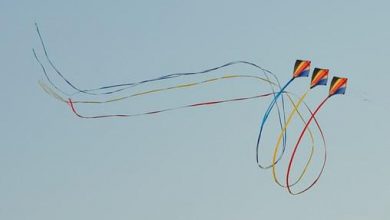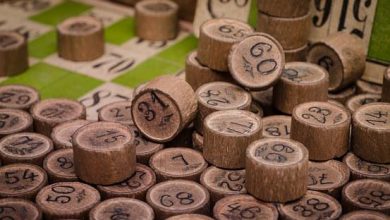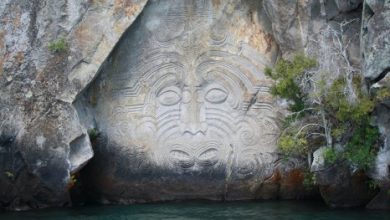
Replete with powerful visual imagery, The Buck in the Snow is an observation, a meditation and a commentary on the transient and fragile nature of life. This poem by Edna St. Vincent Millay revolves around the theme of life and death, love and loss and moreover, on the neutral nature of Nature. The poem utilizes contrasting elements of life and death, fluidity and rigidity, movement and stillness to convey its message.
The Buck in the Snow | Summary
The poem opens with the poet-persona questioning the overcast sky on the whereabouts of a buck and a doe that had been standing near the apple orchard in the evening. The poet questions whether the sky saw the vivacious pair of animals jumping over the stone wall and into the hemlock forest. This imagery of a pair of virile adult deer in their prime, representing life and fertility, is cut short moments later with the image of a deer that has been shot dead and whose red blood scalds the white snow around him.
The poem comments on the strange nature of death which has brought the strong animal down on its knees, or rather its antlers, and has rendered him lifeless. The narrator meditates upon the strange nature of life itself which peers through the eyes of the doe that perhaps might’ve wandered a mile away and is probably staring at her surroundings. Alert and watchful of what might hit her next, she stands alone in the snow-covered forest.
The Buck in The Snow | Poem Structure
The Buck in the Snow is a meditative, clear and concise poem by Edna St. Vincent Millay. The poem is a powerful meditation on the nature of life and death. More specifically, it deals with the nature of fate which can make an organism cease to exist due to a single, sorry and unfortunate event. The unity of thought that the poem holds is brought about by the astute utilization of various literary devices by the poet.
Use of contrasting elements – especially that of order and chaos, life and death is reflected in the very structure of the poem. The poem has an uneven rhyme scheme, with the first stanza being rhymed and the second stanza onwards being free versed. The first stanza of the poem which deals with the vivacious nature of the buck and the doe full of life, prancing around in a free and rhythmic manner is reflected in the a-a-a-a rhyme scheme of the poem. The second stanza in which the buck is killed in a sudden and swift manner is captured by the fact that the stanza is composed of a single line. The third stanza in which the death of the buck is established and the uncertainty surrounding the life of the doe highlighted is reflected in the rhyme scheme where a patterned rhyme gives way to free verse.
The Buck in the Snow | Analysis
The Buck in the Snow | Analysis, Lines 1-5
White sky, over the hemlocks bowed with snow,
Saw you not at the beginning of evening the antlered buck and his doe
Standing in the apple-orchard? I saw them. I saw them suddenly go,
Tails up, with long leaps lovely and slow,
Over the stone-wall into the wood of hemlocks bowed with snow.
The speaker asks the white sky overcast sky whether it saw a buck and a doe standing in an apple orchard at the beginning of the evening. It certainly isn’t a bright day with a clear sky as the sky is overcast with clouds. This is a rather cold and chilly day. The first line of the poem itself brings in the element of coldness- a certain element of a disinterested, ruthless and even an unforgiving setting. We might also identify the literary device of foreshadowing wherein the occurrence of an unfortunate event is hinted at the beginning of the text. The poem does this by mentioning the “hemlock trees bowed with snow”. Hemlock is a tree of poisonous nature and has often been used to symbolize death. It is believed that the Greek philosopher Socrates was administered hemlock before he died. Since then, hemlock copiously featured in literary texts to connote the idea of death and mortality. One might expect something unfortunate to happen in the sentences that follow and surely, it does. This foreshadowing is supported by another instance that is much more subtle and very easy to miss. The phrase “hemlock bowed with snow” is also tinted with a pun on the word “bow”. The image of the branches of hemlock trees bowed with snow in a taut and tense manners brings to one’s mind the idea of a Hunters bow, tense and taught, ready to inflict a swift, silent and sudden death on a hapless animal. The sight of a blood-bathed buck in the later stanza of the poem completes this image. Notice the tension of the snow laden hemlock tree reflected in the use of the internal rhyme “bowed with snow” and “at the beginning of the evening” in lines 1 and 2 of the poem.
Lines 3-5 capture the vivacious and graceful movements of the two animals. The antlered buck is a symbol of virility and the pair of deer in the apple orchard is a symbol of fertility and the potential of life to reproduce itself. Their graceful movement is captured by the use of assonance – the deployment of sweet-sounding vowels. This is captured when the narrator catches a glimpse of the deer jumping with “tails up, with long leaps lovely and slow” before jumping over the stone wall and thence towards there woods. The use of the refrain bowed with snow in the first and the last lines of this stanza on caps the image of the stanza into a single unit.
The Buck in The Snow | Analysis
Lines 6 – 12
Now lies he here, his wild blood scalding the snow.
How strange a thing is death, bringing to his knees, bringing to his antlers
The buck in the snow.
How strange a thing, —a mile away by now, it may be,
Under the heavy hemlocks that as the moments pass
Shift their loads a little, letting fall a feather of snow—
Life, looking out attentive from the eyes of the doe.
Line number 6 hits the reader with the sudden and unexpected sight of the buck lying dead, his red blood scaling the white snow. This is a powerful image in which the warm red blood representing life is said to burn into the cold and lifeless snow which represents death. The use of red and white to illustrate the striking difference between life and death demonstrates a masterful use of the element of contrast in the poem.
The poem ruminates on the strange nature of death which has brought down a seemingly powerful animal with one deft stroke. The buck’s antlers, which was a symbol of power and virility has now bent before death. The use of anaphora (repetition of phrases at the beginning of a line) is used in the first and the third lines of the final stanza (“How strange a thing is…” in lines 7 and 9). The use of this reiterative literary device drives home the strangeness of death and more importantly, the strangeness of life. The image of a doe standing under the snow-covered hemlock trees, alert and watchful to any danger around her maintains the tension between Life and Death. It is this tension between the Life which peers out from eyes of the doe and the unseen-yet-encompassing presence of Death which maintains the dynamics with which the poem began and on which it eventually ends.
The Buck in the Snow | Literary Background
One of the most striking features of the poem is its distinct and memorable use of visual imagery. The white sky, the white snow, the graceful movements of the buck and the doe, the snow-covered land, the red blood on the white snow and finally, the doe’s alert eyes scanning the surrounding for any unforeseen danger -all make use of remarkable visual elements. The masterful use of the visual elements in the poem is not very surprising, considering that Edna St. Vincent Millay was heavily influenced by the Imagist. Imagism was a literary movement in early-20th-century Anglo-American poetry, Imagism favored precision of imagery and clear, sharp language. Imagism has been held as the first organized modernist literary movement in the English language. A distinctive feature this literary movement was its attempt to isolate a single image or event to reveal its essence. The Buck in the Snow, with its brilliant exposition of various themes through the image of a buck being shot in the snow-covered woods has heavily drawn from the Imagist movement.
The Buck in the Snow, with its concise structure, copious use of literary devices and highly impactful visual imagery is a lasting commentary on the fragility of life and the ever-present dynamic relation between life and death as has been captured by the fates of the watchful doe and the ill-fated buck.




